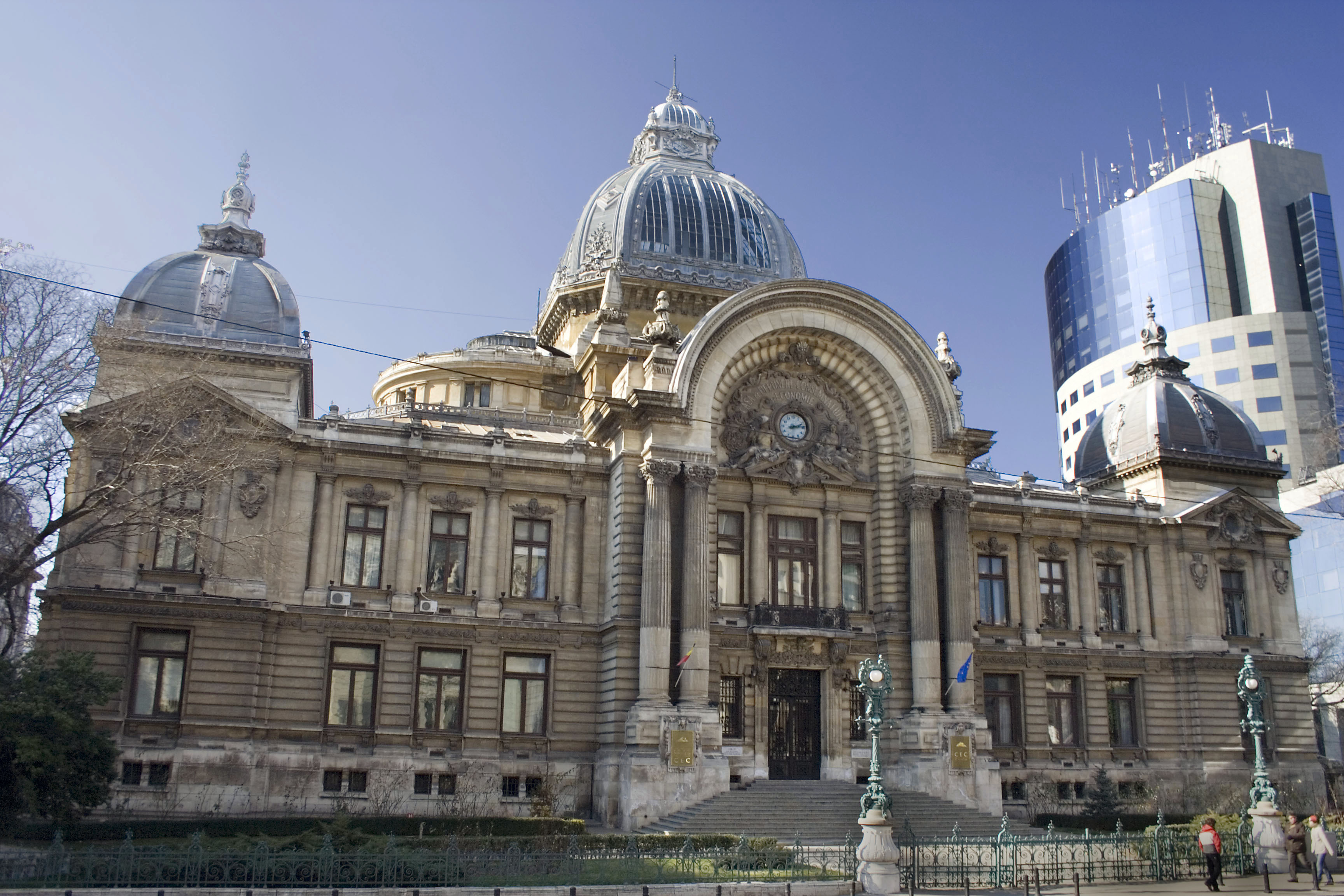- CEC Palace
Infobox Historic building
name = CEC Palace
"Palatul CEC"
caption =
map_type =
latitude = 44.4320
longitude = 26.0965
location_town =Bucharest
location_country = ROU
architect = Paul Guttereau (project), Ion Socolescu (construction)
client = C.E.C. ( _ro. Casa de Economii şi Consemnaţiuni)
engineer =
construction_start_date = 8th of June, 1897
completion_date = 1900
date_demolished =
cost =
structural_system =
style = eclectic
size =The CEC Palace (Romanian: "Palatul C.E.C.") in
Bucharest ,Romania , built in 1900 and situated on Calea Victoriei opposite the History Museum, is the former headquarters of the national savings house "C.E.C.", nowadays a historical building owned by the municipality and intended to host in the future the Art Museum of Bucharest.History
Before the erection of the palace, the spot was occupied by the ruins of a monastery ("Saint John the Great") and an adjoining inn. The church, built in the 16th century, was renovated by
Constantin Brâncoveanu during 1702 - 1703, but later degraded and was demolished in 1875.The palace was built as a new headquarters for the public savings institution "Casa de Depuneri, Consemnaţiuni şi Economie", later known as "C.E.C." Romanian: "Casa de Economii şi Consemnaţiuni"), the oldest Romanian bank. The lands were bought and the building built with the institutions's own funds. Work started on the 8th of June, 1897 and ended in 1900. The projects were designed by the architect Paul Guttereau, a graduate of the School of Art in Paris, while the construction was supervised by the Romanian architect Ion Socolescu.
After 106 years of service, the building was deemed no longer fit for modern banking and was therefore sold to the municipality to be used as a museum, in exchange for 17.787 mil. euro. Even if no longer open to CEC clients, the Palace remains rented as bank headquarters until a new suitable building is found or built.
Architecture
Built in eclectic style, the palace ends in a glass and metal dome. The entrance features an arch supported by two pairs of columns in composite style. The four corners are decorated with gables and coats of arms and ending in Renaissance domes.
ee also
*
List of palaces References
* Silvia Colfescu, "Bucureşti - ghid turistic, istoric, artistic", ed. Vremea, 2006
* Dan Berindei, Sebastian Bonifaciu - "Bucureşti Ghid turistic", Ed. Sport-Turism, Bucureşti,1980
* [http://www.interesulpublic.ro/08-07-2008/CEC-ul-este-prima-banca-din-Romania.html]
* [http://www.9am.ro/stiri-revista-presei/Business/47756/Noul-sediul-al-CEC-vecin-cu-Palatul-Parlamentului.html]External links
* [http://hartamonumentebucuresti.apmnir.ro/ Map of Historical Monuments in Bucharest]
Wikimedia Foundation. 2010.
